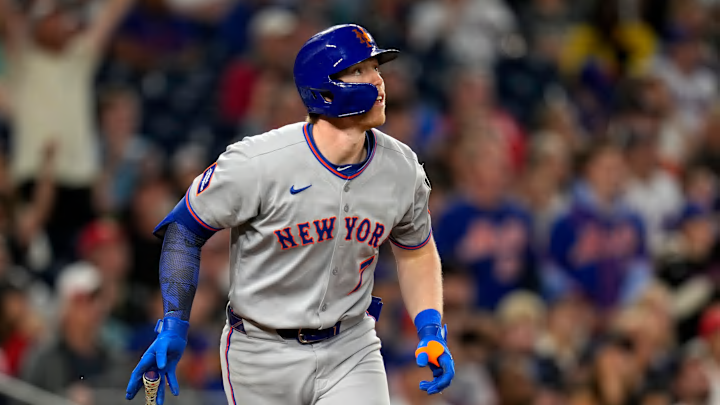The New York Mets entered the 2025 season with renewed optimism, riding the momentum of a surprising run to the NLCS in 2024. A key part of the team's future, and a source of much debate, has been the performance of third baseman Brett Baty. Once a highly-touted prospect, Baty has had his share of struggles at the big-league level, but the 2025 campaign has seen him flash signs of the player he was projected to be.
As the season progresses, a clear picture of Baty's development has emerged. The question for the Mets front office is whether his recent success is sustainable and a sign of a true breakout, or simply a hot streak in the midst of lingering inconsistencies. This crucial decision could also determine the long-term future of the hot corner in Queens.
1 reason to be sold on Brett Baty
One reason the Mets should be all-in on Brett Baty is his impressive improvement in plate discipline and power, as evidenced by his 2025 Statcast metrics. After years of struggling with strikeouts and a lack of consistent hard contact, Baty has made significant strides this season. His Hard-Hit %, which measures batted balls at 95 mph or higher, is the highest of his career, indicating he is consistently making optimal contact.
This is supported by an elevated Barrel % and a higher average exit velocity, which places him in a much more favorable percentile among all MLB hitters. Furthermore, Baty has shown a marked improvement in his approach at the plate. His strikeout rate has decreased, while his walk rate has seen a consistent level like previous seasons.
1 reason to not be sold on Brett Baty
However, a critical reason the Mets should be wary of fully committing to Baty is his persistent lack of an elevated launch angle and his tendency to hit ground balls. This isn't a new issue; throughout his minor league career, Baty has shown a high propensity to hit balls on the ground, a tendency that has historically limited his offensive production.
Despite the improved exit velocity and hard-hit rate in 2025, his average launch angle remains in a low percentile, limiting his ability to turn hard-hit ground balls and line drives into better run production. While he is hitting for power this season, a large portion of his extra-base hits are doubles and triples, and his home run production could be even higher. The tendency to hit the ball on a flatter plane makes him susceptible to defensive shifts and could prevent him from reaching his full power potential.
In the end, the Mets face a dilemma. Baty's offensive profile in 2025 is tantalizing, with advanced metrics suggesting he is finally tapping into his immense power potential. Yet, the underlying issues—the flat launch angle and a below-average glove—prevent him from being a sure thing. The Mets must weigh the promise of his improved bat against the risk of his defensive liabilities and the possibility that his newfound power production is a product of a hot streak rather than a permanent fix. This balancing act will define his future in Queens.
